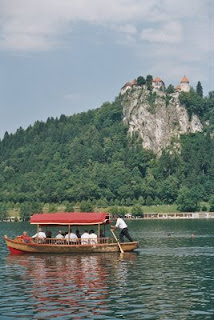This week
Brian Yarvin, author of
Cucina Piemontese, explores the wonderful cooking from the Piemonte region, located in the northeast corner of Italy, on Hippocrene Cooks.
 Summer in my native Piedmont can be hot, even in the mountains where my family and I spent July and August every year. One dish that never failed to appear at the dinner table in the summer was "zucchini in carpione", a refreshing vegetable dish and an excellent alternative to salad and tomatoes to fight the heat. When the body and mind crave coolness, this cold dish of zucchini marinated in vinegar, sage, onion, and garlic will be most pleasing.
Summer in my native Piedmont can be hot, even in the mountains where my family and I spent July and August every year. One dish that never failed to appear at the dinner table in the summer was "zucchini in carpione", a refreshing vegetable dish and an excellent alternative to salad and tomatoes to fight the heat. When the body and mind crave coolness, this cold dish of zucchini marinated in vinegar, sage, onion, and garlic will be most pleasing.  4 servings
4 servings
½ cup olive oil
1 Pound zucchini, sliced thin lengthwise
1 large white onion, sliced thin
2 garlic cloves, sliced thin
1 cup white wine vinegar
½ cup dry white wine
2 teaspoons whole peppercorns
1 teaspoon whole allspice
4 bunches sage leaves
3 bay leaves
Begin by browning the zucchini slices in the oil using a frying pan over medium heat. Drain the slices and blot them with paper towels. Set them aside and reserve the oil. When you’ve finished, sauté the onions in the same oil. When they become transparent, add the vinegar and spices and cook together for 4 minutes on high heat.

Lay the browned zucchini slices flat in a glass baking dish, with the onions in an even layer on top of the zucchini, add the cooked vinegar/wine/onion/spice mixture and refrigerate for at least 5 to 6 hours.
Pictures courtesy of Brian Yarvin and Wikimedia Commons.



























